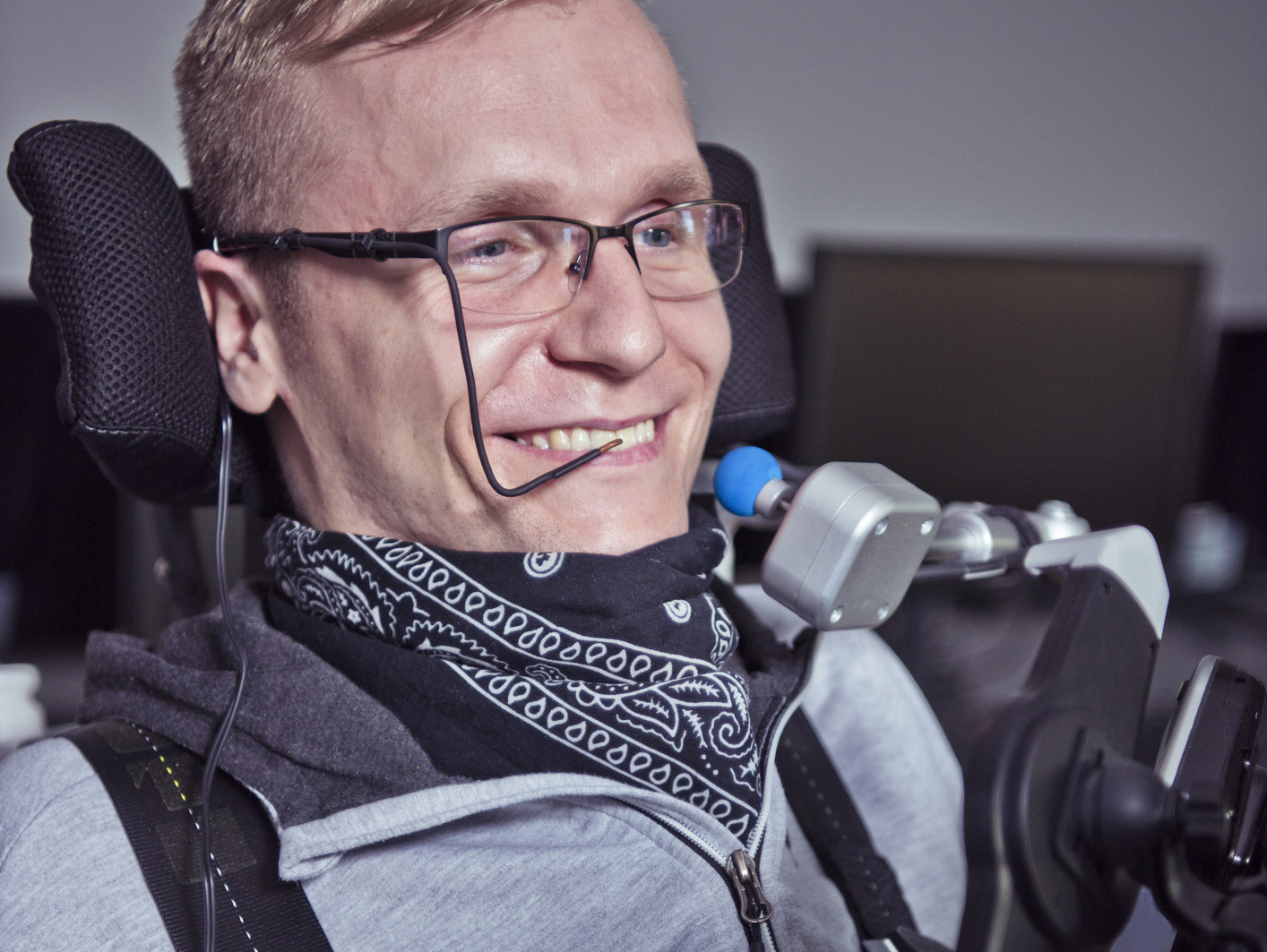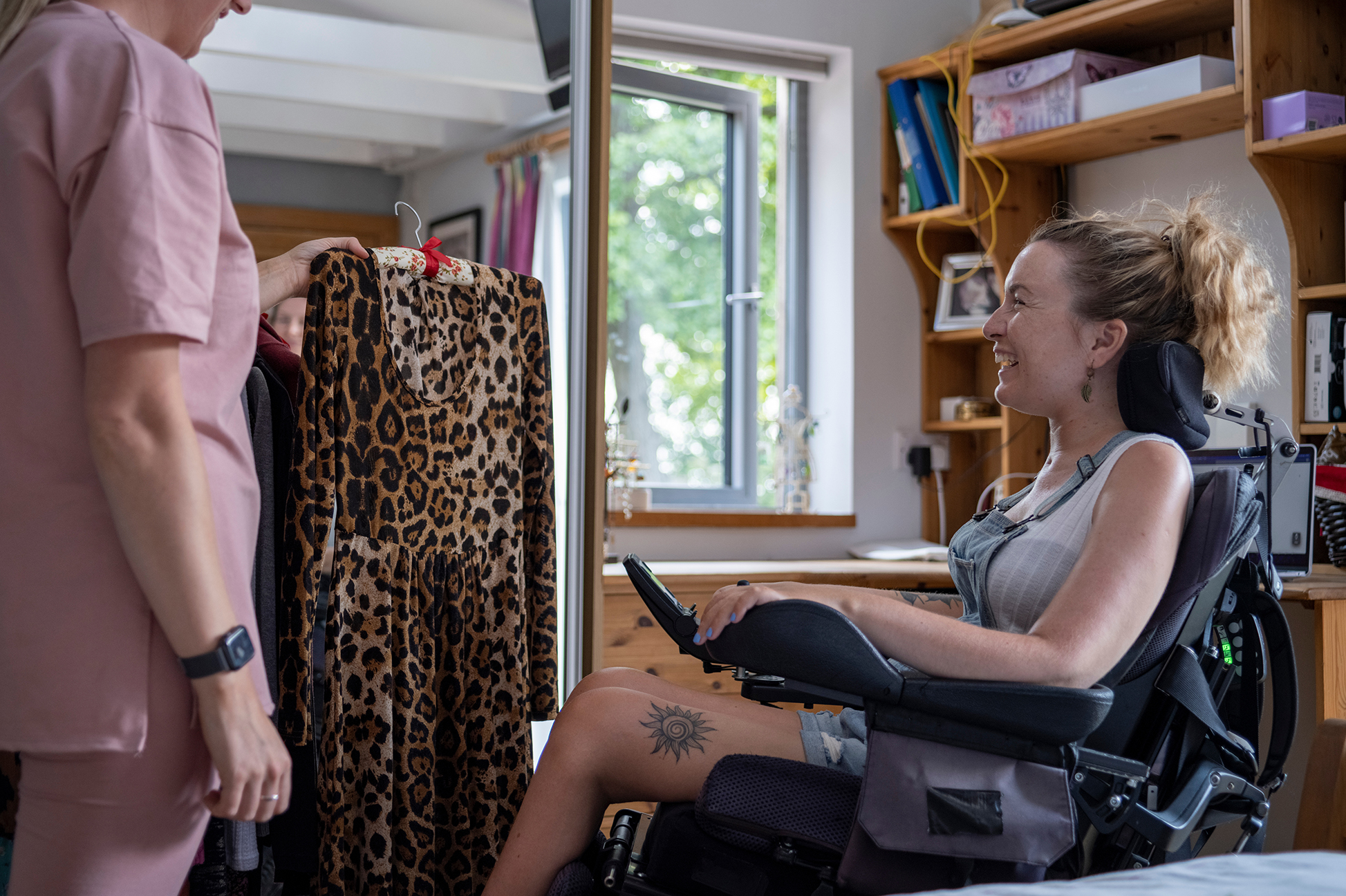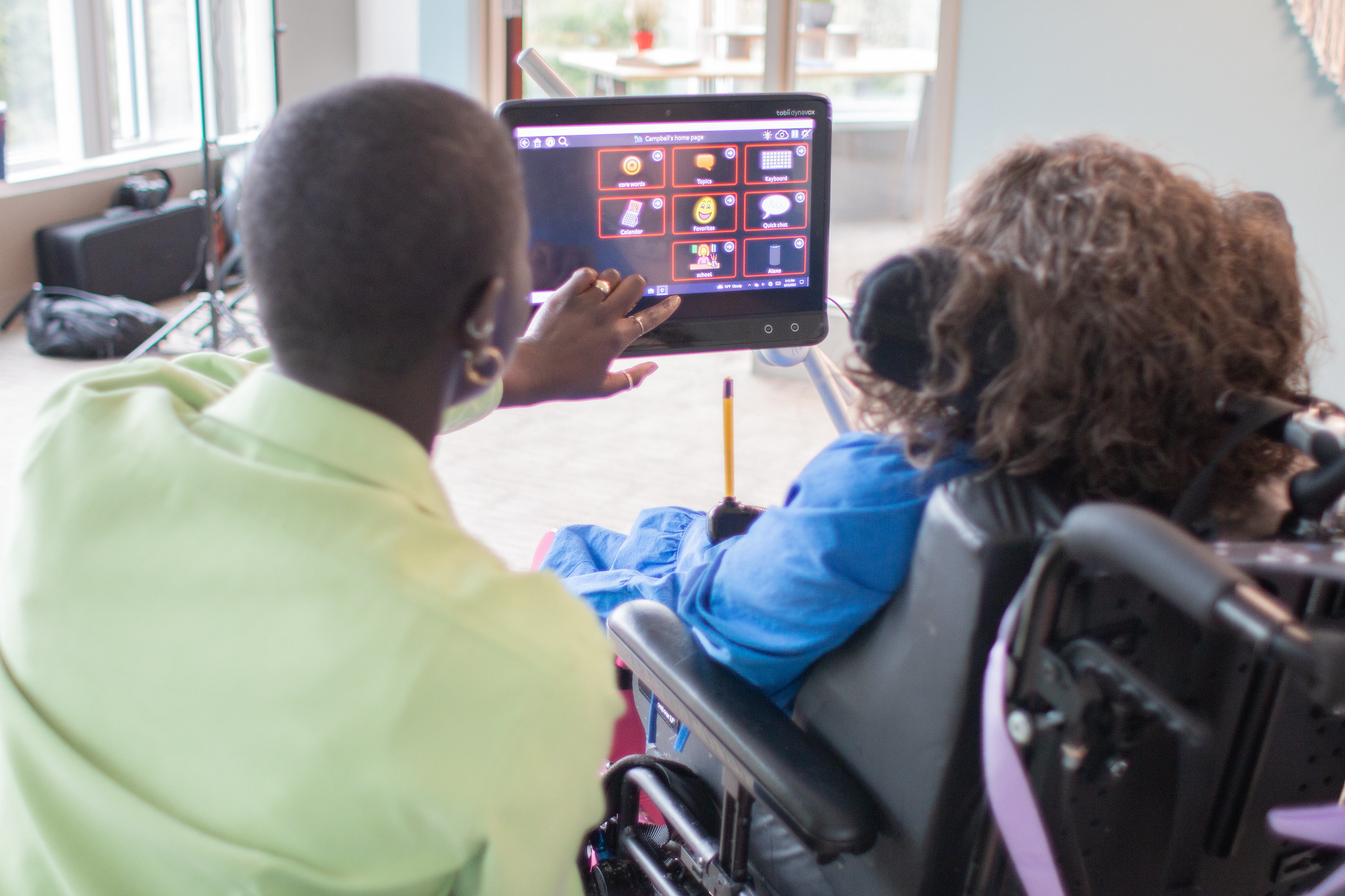5 ways to better communicate with people who use AAC devices
In the United States, more than 2 million people depend on Augmentative and Alternative Communication, or ACC, devices, reports the United States Society for Augmentative and Alternative Communication. Among them are university and K-12 students.

The University of Kansas Center on Developmental Disabilities (KUCDD) recently shared “Empowering Students Who Use AAC,” (video) which included perspectives from people who use these devices.
As part of Assistive Technology Month in Kansas, we’re highlighting some of their advice on how others can help facilitate better conversations in and outside of the classroom to better allow everyone to participate in conversations.
Those with communication disabilities have important perspectives that deserve to be shared. Following these tips can help ensure they will be.
1. Share group discussion questions in advance — or allow them to set the topic.
Participating in group discussions is important in a variety of situations. Particularly in instructional or professional settings where discussion topics are pre-planned, leaders should provide questions in advance to students who use AAC.
Ski Adams, an assistant researcher at KUCDD who uses a speech generating AAC device, said this can help conversations flow more easily for those who need to compose responses.
“Students can have many of their answers pre-programmed,” he explained. “With more students who have communication disabilities attending college, this is an area that needs focus.”

2. Include all people in conversations and expect to allow extra time for responses from AAC users.
In a social setting, it might be more challenging to predict the topic of conversation ahead of time. And even in the classroom, "There are times when a discussion will turn in a direction they had not planned for,” Adams said.
To include people with AAC devices, it is important to make sure everyone has had a chance to respond and is done speaking before moving on to the next topic. This has the benefit of giving everyone a chance to consider their responses, but it is particularly important for those who need time to compose their message.

3. Address and respond to the person — not their companions or their device.
People who interact with those who use AAC devices should address the person who is communicating — not their device or companion.
“I don't like it when people read over my shoulder as I am typing on my AAC device I have to tell them to please not look over my shoulder,” said Nicole Noblet, a Kansas LEND trainee who uses an AAC device.
While some might be uncomfortable or unsure how to interact with people who use AAC devices, that isn't an excuse to exclude them from any activities, including in professional settings, as well as at businesses or as part of a healthcare visit.
"At doctors’ appointments, I have to tell the provider to talk to me and not my mom. Even though sometimes my mom has the answer, I am the patient and should be treated as an adult,” she said.

4. Respect AAC users and their abilities.
People who have communication disabilities may or may not have disabilities. Regardless, they deserve to be treated respectfully and inclusively by those who communicate with them. Unfortunately, people who use AAC devices report being condescended to by others.
“AAC users should be treated as people who are smart and not talked down to,” Noblet said. "We are equal."
In a classroom setting, educators should maintain the same expectations as they would for all students. While they may need extra time to communicate, AAC users are equally capable of offering insightful observations. Don't be surprised by an interesting analysis from a perspective you may not have considered before.
5. If you’re confused or unsure, ask for clarification.
Like every piece of technology, AAC devices aren’t perfect, particularly when it comes to matching the tone and emotion of the speaker. Just like you would when speaking with anyone, it’s OK if you need to ask for clarification. It’s also a good idea to check with everyone about what accommodations or etiquette works best for them.
“Students need to be able to explain what they need to succeed in class; sometimes they may know their devices, but they are unable to explain what accommodations they need,” Adams said.

Mikel McCary, a former specialist with Assistive Technology for Kansans who utilizes assistive technology himself, was part of celebrations in Topeka for the newly designated Assistive Technology Month. While people can sometimes see the communication devices instead of the person, McCary people need to move beyond these differences to find what they have in common.
“Just because people are different doesn’t mean you can’t connect," McCary said. “Think of them as a person. That technology is just an enhancement."